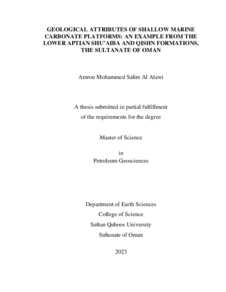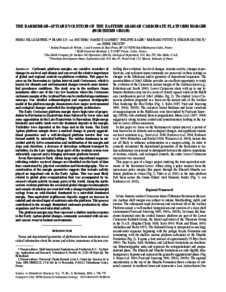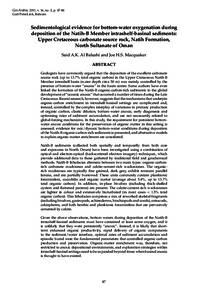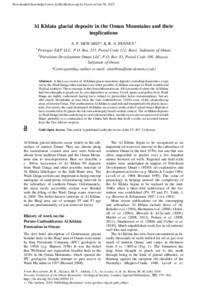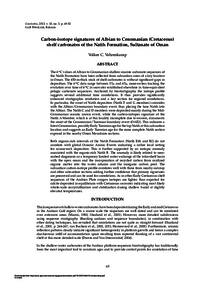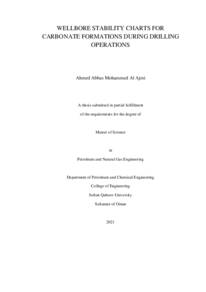Document
Facies, stratigraphy, and evolution of a middle ediacaran carbonate ramp : Khufai formation, Sultanate of Oman.
Identifier
DOI: 10.1306/07291312140
Contributors
Grotzinger, John., Author
Bergmann, Kristin., Author
Publisher
American Association of Petroleum Geologists.
Gregorian
2014-08
Language
English
English abstract
The Khufai Formation is the oldest carbonate platform of the Cryogenian to lowermost Cambrian Huqf Supergroup. A stratigraphic characterization of this unit includes detailed facies descriptions, a sequence-stratigraphic interpretation, and evaluation of lateral heterogeneity and overall ramp evolution. The Khufai Formation comprises one and one-half depositional sequences with a maximum flooding interval near the base of the formation and a sequence boundary within the upper peritidal facies. Most of the deposition occurred during highstand progradation of a carbonate ramp. Facies tracts include outer-ramp and midramp mudstones and wackestones, ramp-crest grainstone shoal deposits, and extensive inner-ramp, microbially dominated peritidal deposits. Outcrops in the Oman Mountains are deepwater deposits, including turbiditic grainstone and wackestone interbedded with siliciclastic-rich siltstone and crinkly laminite. Facies patterns and parasequence composition are variable both laterally across the outcrop area and vertically through time because of a combination of ramp morphology, siliciclastic supply, and possible syndepositional faulting. The lithostratigraphic boundary between the Khufai Formation and the overlying Shuram Formation is gradational and represents significant flooding of the carbonate platform. The stratigraphic characterization presented here along with the identification of key facies and diagenetic features will help further future exploration and production of hydrocarbons from the Khufai Formation.
Member of
ISSN
0149-1423
Resource URL
Category
Journal articles


